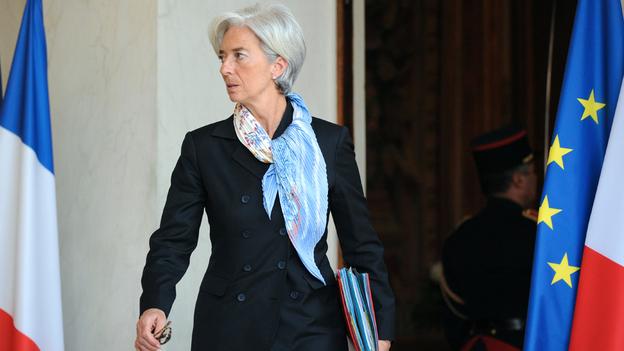Nancy Diehl writes: When International Monetary Fund managing director Christine Lagarde goes to the G8 summit in June, she may well be wearing a scarf – a fashion accessory that she’s become known for, and one that’s been drawing more and more attention.
In fact, the BBC recently identified scarves as a “new power symbol” for women.
True, just as some men choose amusing ties to enliven monochrome suits, many women who work in an atmosphere that requires conservative business apparel will wear scarves to add a fillip of colour and distinction.
The scarf is the most simple form of adornment: a single piece of cloth. For this reason, it’s one of the most versatile clothing accessories, used for centuries across a variety of cultures, for a range of purposes.
Many Muslim women wear headscarves for modesty, while women of a certain age favour scarves with a triangular fold to protect expensive or elaborate coifs.
The British firm Jacqmar produced designs with propaganda-themed slogans. One design mimicked a wall with posters urging citizens to “Lend to Defend” and “Save for Victory”.
But in Western culture, the scarf is most prominently known for its use as a fashion accessory, one that first gained widespread popularity in the 19th century.
The fichu is a typical 18th- and 19th-century style that can be seen as the forerunner of modern scarves. A piece of fabric worn draped on the upper chest and usually knotted in front, it provided modest covering but was also an opportunity to add an especially fine textile – sometimes lace edged or embroidered – to an ensemble.
Lightweight, finely woven silk and cashmere shawls from India were one of the first fashionable scarf styles. Empress Joséphine – the first wife of Napoleon – had an extensive collection (thanks to her husband’s travels), and the style persisted through much of the 19th century, spawning cheaper imitations fabricated in other parts of Europe, notably France and Paisley, Scotland.
Certain labels are particularly associated with high style in scarves. Ferragamo, Fendi and Gucci – all originally esteemed leather goods houses – now produce desirable scarves.
But for prestige and polish, Hermès represents the pinnacle of scarf culture.
Limiting the number of designs they offer each season has maintained Hermès’s mystique. The company’s focus on craftsmanship helps justify their reputation and high prices; Hermès takes pride in the impressive number of colours in each design, the hand-printing process and the fineness of their silk, positioning their output as artisanal creations.
In contemporary fashion, scarves continue to serve the same functions as those earlier fine linen fichus and paisley shawls; they denote connoisseurship and sophistication.

